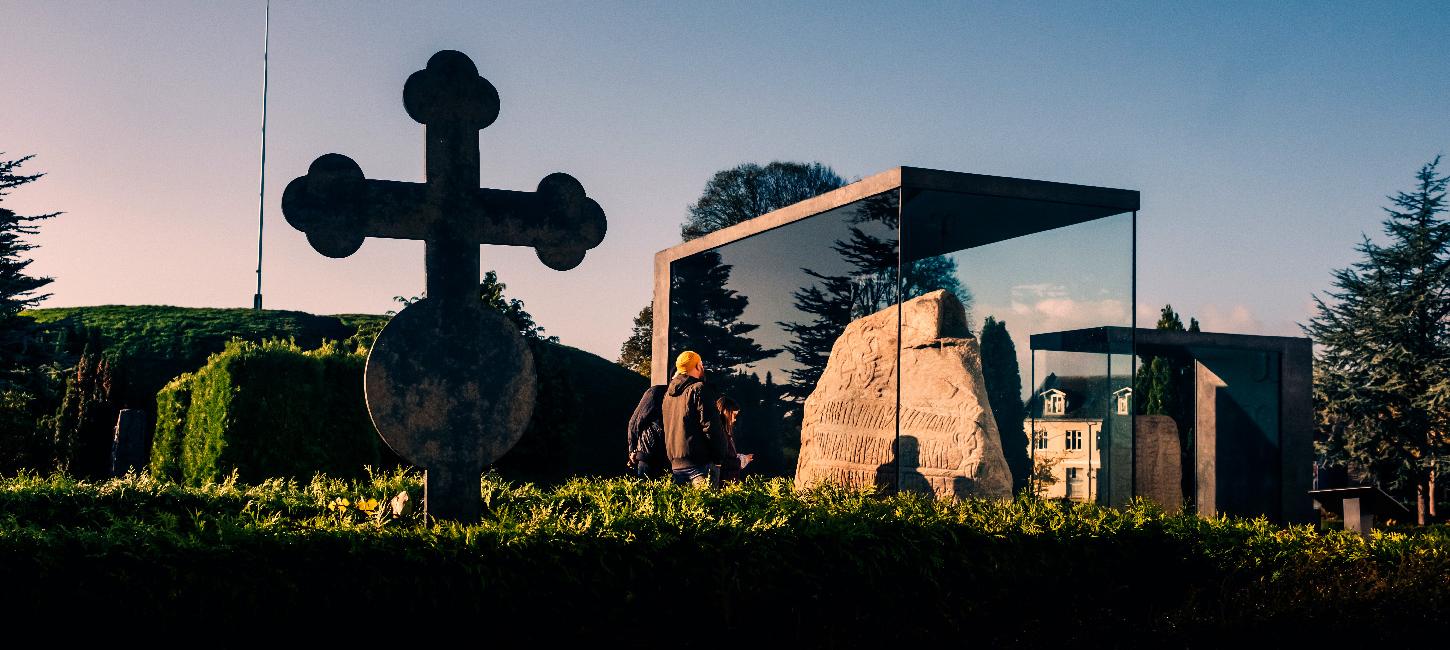Kongernes Jelling - Home of the Viking Kings
Visit the Home of the Viking Kings - World Heritage and award-winning experience centre!
At Kongernes Jelling, you will meet the quintessence of human history. You see people’s weaknesses and strengths. Experience colossal gluttony. Desire for power. But also ingenuity, and self-assertion beyond all limits.
We will get to the weaknesses, but the strengths radiate from the impressive monument area. This is the area of records. The world’s largest shipyard. The world’s largest construction from the Viking Age. The world’s largest rune stone. An area the size of 20 football pitches fortified with a palisade about 4 metres high. A construction work without equal, done without machines - just with the power of hand and draught animals, and only possible thanks to the great craftsmanship and ingenuity of the Vikings.

Photo:Kongernes Jelling
It was and is an amazing achievement. Not least when you consider that the area only played a role for perhaps 50 years. Namely from when Gorm (the Old) became king in 934 until Harald (Bluetooth) was killed during a civil war with his own son, Sweyn Forkbeard.
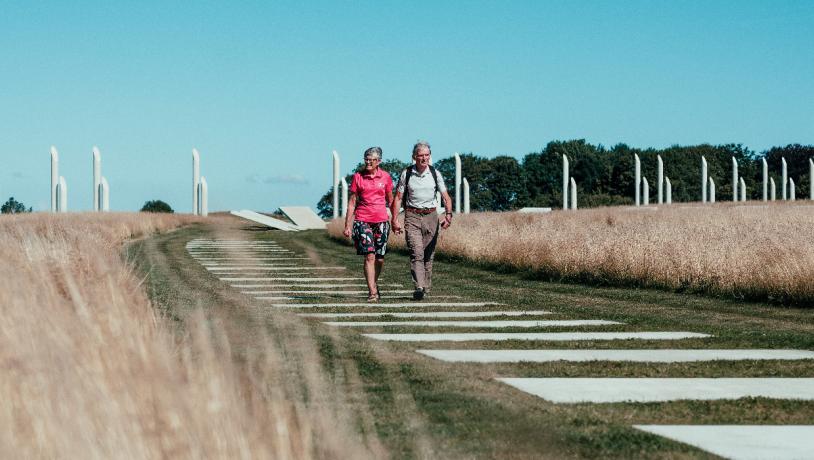
Photo:Destination Trekantområdet
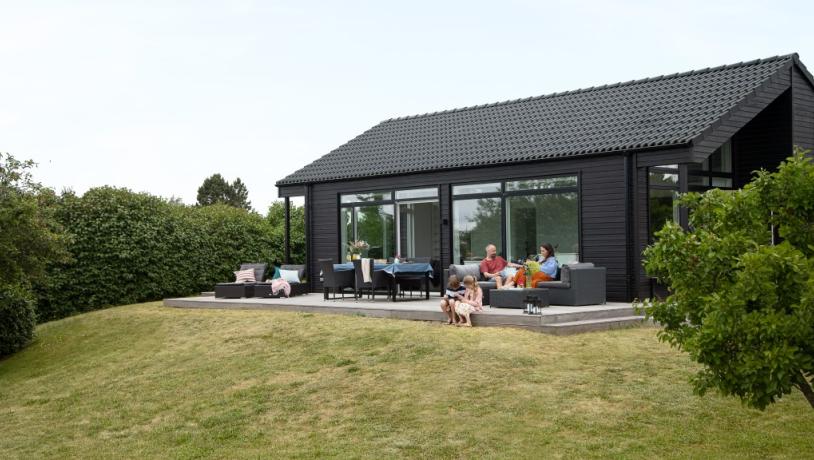
Photo:NOVASOL

Photo:Kongernes Jelling
From ring fortresses to Christianity
Harald was an enterprising gentleman. In addition to the Monument Area, one of Denmark’s largest burial mounds, and the Ravning Bridge, which was Denmark’s longest bridge for almost 1,000 years, Harald also built 5 or 6 ring fortresses around the country. He united Denmark and was the Harald who Christianised the Danes. Or perhaps more accurately, he established Christianity as the country’s official religion. There were plenty of Christians before Harald and more ascetics afterwards. In terms of practical politics, it was rather a trade-off that made the difference. By making the Danes Christians, Harald deprived the German emperor of a good reason to attack the country.
Harald was very boastful
The real reason for all of Harald’s construction is still pretty much unknown. Both royal and ring fortresses were abandoned very soon after they were built. Most of all, it seems that Harald wanted to show his power. He was very boastful, he was, and that was his fate because the resource consumption of manpower and material was massive. His strength became his weakness. A rebellion started in the mid-980s, and his son Sweyn Forkbeard was on the side of the rebels. According to the chronicler Saxo, Harald was killed by a shot in the back while attending to his duties. But that’s probably a myth.
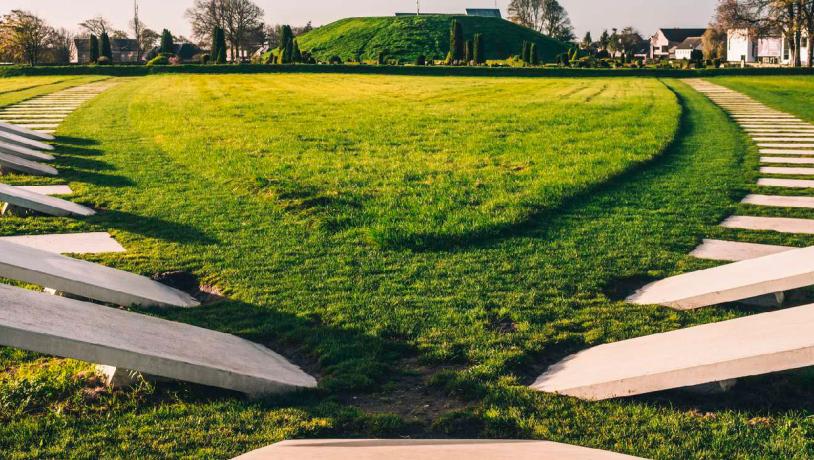
Photo:Frame & Work
The Jelling Stones
There are two rune stones in Jelling erected by the Viking kings Gorm the Old and his son Harald Bluetooth from around 950 to 970. The stones are often called Denmark’s birth certificate because here, we officially have the name Denmark and the Christian faith chiselled in stone.
Denmark’s penance and Harald’s achievements
The smaller of the two stones was erected around 950 by Gorm the Old in honour of Queen Thyra. On the stone, Gorm calls Thyra the Penance of Denmark, and this is the oldest mention of the name “Danmark” we have within the country’s borders, although “Danmark” is found in writing in older European sources.
The large Jelling Stone was erected by Harald Bluetooth and honours both his father, Gorm and mother, Thyra. But it also describes some of Harald’s achievements, of which the introduction of Christianity is perhaps the greatest.
The two rune stones are part of the impressive monument area. Together, the stones consist of a burial mound, perhaps belonging to Gorm the Old, a monument mound, Jelling Church and the world’s largest stone ship, all surrounded by a huge palisade.
Did you know that the entire area was designated a UNESCO World Heritage Site in 1994 and was Denmark’s first attraction on the World Heritage List?
Photo:LLBR
New excavations, new knowledge
History in Jelling is both old and almost new. Although the Great Jelling Stone has been known since it was erected more than 1,000 years ago, it is only recently that the full grandeur of the monument area has come to light. With the excavation of the sites, we have, among other things, gained an insight into the Vikings’ impressive knowledge of mathematics and geometry. Today, the impressive monument area has been brought back to life by artist Ingvar Cronhammar, who has recreated the area’s grandeur with white tiles and palisade posts.
Explore the experience centre
Next to the monument area is Kongernes Jelling (Home of the Viking Kings), an interactive experience centre where you step into the everyday life of the Vikings. Here you can learn about the Jelling stones, the Viking religion, the Viking kings and the mighty buildings of the Viking Age. You will learn more about Danish history through bold storytelling and modern communication technology. Come and discover how the Danish royal line from Gorm the Old to today has come about through bloody battles, intrigues, rebellions and diplomacy. Remember: At Kongernes Jelling, you are always welcome to ask questions.
The Experience Centre
Book your visit to Kongernes Jelling now
Buy your ticket for Kongernes Jelling here
Both the experience centre and parts of the monument area are wheelchair accessible, ensuring a welcoming visit for everyone. Be sure to explore the spacious museum shop, where you'll find regional products, historical jewellery, and a wide selection of classic Viking souvenirs. Throughout the year, the museum hosts guided tours, special exhibitions, and a variety of events for visitors of all ages.
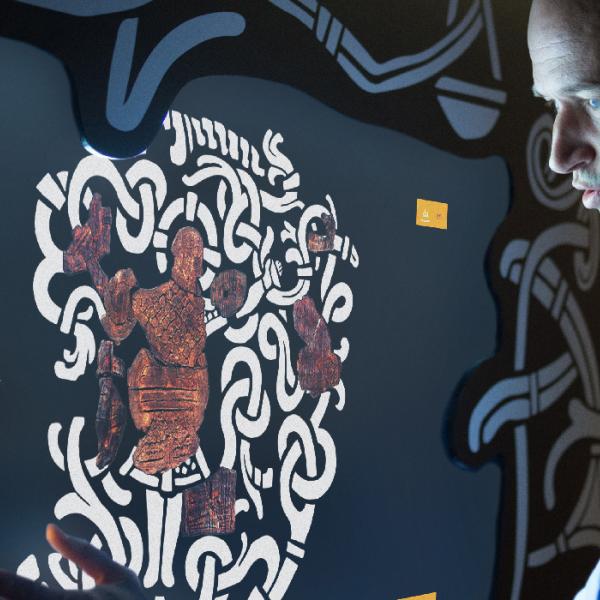

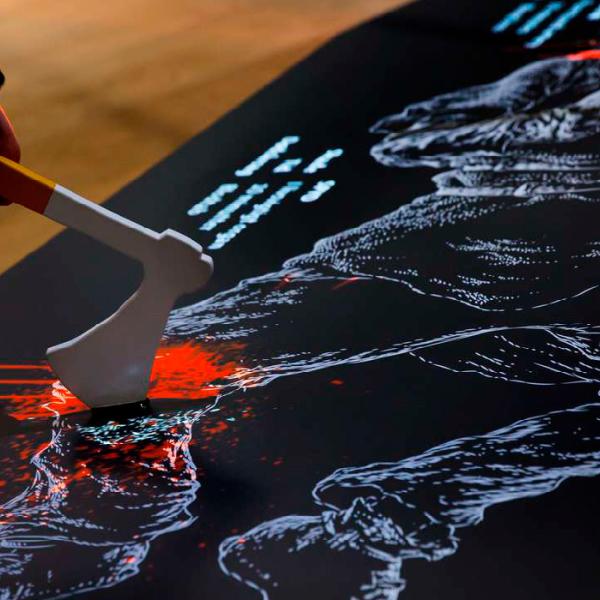
Kongernes Jelling – home of the Viking kings
The runes tell us that it was in the Viking Age in Jelling that Denmark got its name. King Gorm wrote it on his runestone, and we have used it ever since. It was also here that King Harald Bluetooth, ...
